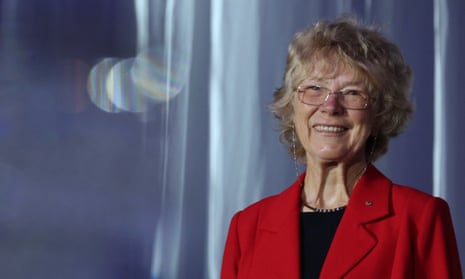A record number of women have received prime minister’s science awards, with mathematician Cheryl Praeger taking out the top gong.
On Wednesday evening Praeger, whose expertise in group theory and combinatorial mathematics has underpinned advances in algebra research and computer cryptography, was awarded the prime minister’s prize for science.
The prime minister, Scott Morrison, congratulated Praeger for her “outstanding contribution to mathematics”.
“Our science community plays such a big role in the prosperity of our country,” he said. “Scientists are the ultimate problem solvers. They grow the economy and create jobs.”
Karen Andrews, the industry, science and technology minister, said female representation in the honours had gone “from just one female recipient last year to five this year, the most ever represented in the awards”.
“I hope this will inspire even more girls and women to be involved in [science, technology, engineering and maths],” she said.
The Walter and Eliza Hall institute of medical research won the prime minister’s prize for innovation for its role in developing a breakthrough anti-cancer drug.
The group of researchers including Peter Czabotar, David Huang, Guillaume Lessene and Andrew Roberts were recognised for their roles in developing venetoclax, a drug that can flick a switch within a leukaemia cell to kill it.
Both major awards have prize money of $250,000.
Other award recipients included:
Samantha Moyle and Sarah Finney for excellence in science teaching in secondary and primary school
Laura MacKay, who won the Frank Fenner prize for life scientist of the year for work in identifying the role of tissue-resident T cells in protecting the body from infection and cancer
Elizabeth New, who won the Malcolm McIntosh prize for physical scientist of the year for pioneering the development of new chemical imaging tools to observe healthy and diseased cells
Luke Campbell, who won the new innovator prize for inventing the nura, headphones that adapt to an individual’s unique hearing to enhance the audio experience.
Those awards have prize money of $50,000.
In 2016 the chief scientist released a report that found just 16% of the 2.3 million Stem-qualified Australians are female; the largest gender gap was in engineering.
Despite a focus at the government level on Stem courses to improve innovation, the Grattan Institute has argued that science graduates have worse job prospects than those in technology, engineering and maths and worse pay outcomes.
